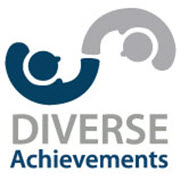Using Automation and Building Engagement

In our attempts to be more “social”, there seems to be an ongoing discussion / battle around automation and engagement. Is it okay to automate some, all or none of your social media activities? I’m aware of folks that have totally abdicated the responsibility of their social media efforts to either automation or a consultant/agency. Conversely, I’m aware of other folks that struggle mightily on a daily basis to create “original” content and manually post to all of their social platforms, in many instances becoming so overwhelmed they abandon their efforts. In both of these cases, the individual/team are operating without any real strategy as to why they are posting, to who, on which channel and when.
First, let’s examine what is meant by automation.
The dictionary (Random House) defines automation as: the technique or system of operating a mechanical process by highly automatic means, as by electronic devises, reducing human intervention to a minimum.
And therein lies a portion of the issue, in our efforts to reduce human intervention of repetitive tasks, some have approached social as a mechanical process (think, I must post five times a day or my boss will be all over me). The difficulty is that most relationship building endeavors, are anything but mechanical or routine. Each of our audiences are unique. Sure, we can categorize them into similar groups or buyer personas based on interests, needs or geographic location, but those are meant to be guidelines to determine what we need to communicate at the right time and place to solve a particular issue, not a sum total of any one person.
In her excellent post “How to use Social Media Automation to Enhance (not hurt) your Social Media Strategy“, Kristi Hines covers the good and the bad of social media automation. Like Ms. Hines, I agree that a preferable tactic is to vet the posts that you are going to schedule for the day/week or beyond (I personally only post out about a week ). As she notes; “By automating (to an extent) the content that you share, you will keep your profiles up to date while opening up more time to do more personalized interactions (read engagement)”. You only have so much time to invest in your efforts (thus why it may make sense to outsource your community management, but that’s an entirely different conversation) and it’s important to be spending it where you’ll get the best return (measuring your success, yep, another post), that I’m sure you’ll agree will be in chatting to your future and current brand advocates. By using automation effectively, you should have more time to engage with those in your community (future clients, clients, influencers, vendors and as importantly employees).
Our goal in automating certain tasks should be to allocate more time to making those meaningful connections that can lead to both tangible and intangible returns (part of the measurement chat). I believe that by fully automating your social; “so it looks like your active” and not engaging with those that connect with you is a drain on the little financial and time resources you commit to it. In his book “Social Media Explained“, Mark Schaefer outlines three key elements behind every successful social media interaction that he studied or was informed of; “Targeted Connections + Meaningful Content + Authentic Helpfulness = Business Benefits”. As he clearly illustrates in the book, building relationships, nurturing those relationships and being helpful, leads to returns – tangible (a speaking engagement) or intangible (an introduction to a new connection that leads to other indirect opportunities).
As noted by Schaefer and fellow marketing authors and leaders Bryan Kramer and Ted Rubin, we’ve moved away from the traditional Business to Business (B2B), Business to Consumer (B2C) to a more personal relationship of one to one, or as Kramer notes Human to Human (H2H – title of his new book). By fully automating your social efforts; especially automated replies on Twitter (DM and tweet), you are demonstrating, or at the very least implying that you are not truly interested in engaging with those that engage with your content. Find the right balance for yourself and build meaningful relationships.
As Ted Rubin noted in a recent Instagram/Facebook post and quoting Maya Angelou:

Resources:
“How to Use Social Media Automation to….” Kristi Hines post on iAquire blog, published June 5, 2014.
Ted Rubin Straight Talk – Blog
Rich Brooks interviews Ted about “Being Human in the Digital Age”
Being Human in the Digital Age… Ted Rubin and @therichbrooks [Audio] http://t.co/GnOnwouzFp via @TedRubin
— Bryan Kramer (@bryankramer) May 11, 2014
“Is Social Automation the future of Social” Matthew Sweezey post on ClickZ published June 26, 2014.
“Be Relevant or Die: The New Nature of Nurture”. Will Spendlove post on Marketo Blog published June 26, 2014.







